Dogs Ease Namibia's Cheetah-farmer Conflicts
Advertisements:
Gobabis, Namibia – Winding through the parched Namibian farmland, Bonzo, an Anatolian shepherd dog, has a singular focus: protecting his herd of goats from lurking predators. He pads along, sniffing the air and marking the scrubby landscape, just like a bodyguard ready to ward off any threat to his charges, which he considers family. [They're not pets. They're not allowed to be pets], said Bonzo's owner farmer Retha Joubert. The breed descends from ancient livestock dogs used thousands of years ago in what is now central Turkey. And they not only save sheep and goats, but have handed a lifeline to Namibia's decimated cheetah numbers by reducing conflicts between farmers and predators. [The dogs are protecting the flock in such a way that the farmers don't have to kill predators], said Laurie Marker of the Cheetah Conservation Fund (CCF) which breeds the dogs near northern city Otjiwarongo. [It's a non-lethal predator control method so it is green, it's happy, it's win-win].
The concept is simple. The dogs are placed with a flock when a few weeks old to bond with the livestock. They live permanently with the animals, loyally heading out with them every day to deter hunters, and bedding down with them at night. Marker's centre started breeding the livestock dogs to promote cheetah-friendly farming after some 10 000 big cats – the current total worldwide population – were killed or moved off farms in the 1980s. Up to 1 000 cheetahs were being killed a year, mostly by farmers who saw them as livestock killers. But the use of dogs has slashed losses for sheep and goat farmers and led to less retaliation against the vulnerable cheetah.
The concept is simple. The dogs are placed with a flock when a few weeks old to bond with the livestock. They live permanently with the animals, loyally heading out with them every day to deter hunters, and bedding down with them at night. Marker's centre started breeding the livestock dogs to promote cheetah-friendly farming after some 10 000 big cats – the current total worldwide population – were killed or moved off farms in the 1980s. Up to 1 000 cheetahs were being killed a year, mostly by farmers who saw them as livestock killers. But the use of dogs has slashed losses for sheep and goat farmers and led to less retaliation against the vulnerable cheetah.
Anatolian Shepherd dog Bonzo (L) leads a herd of goats on Retha Joubert's farm near near Gobabis, east of the capital Windhoek, on August 15, 2013. Five-year old Bonzo is part of the Cheetah Conservation Fund (CCF) which breeds the dogs near northern city Otjiwarongo. The dog's behavior, harnessed in Turkey thousands of years ago, saves sheep and goats. But it has also handed a lifeline to Namibia's decimated cheetah numbers by reducing conflicts between farmers and predators. The center started breeding the livestock dogs to promote cheetah-friendly farming after some 10,000 big cats – the current total worldwide population – were killed or moved off farms in the 1980s. (Photo by Jennifer Bruce/AFP Photo)
A cheetah lies at The Cheetah Conservation Fund (CCF) center in Otjiwarongo, Namibia, on August 13, 2013. The CCF started breeding Anatolian livestock dogs to promote cheetah-friendly farming after some 10,000 big cats – the current total worldwide population – were killed or moved off farms in the 1980s. Up to 1,000 cheetahs were being killed a year, mostly by farmers who saw them as livestock killers. But the use of dogs has slashed losses for sheep and goat farmers and led to less retaliation against the vulnerable cheetah. (Photo by Jennifer Bruce/AFP Photo)
An Anotolian Sheperd dog and two goats sit at The Cheetah Conservation Fund (CCF) in Otjiwarongo, Namibia, on August 13, 2013. (Photo by Jennifer Bruce/AFP Photo)
A cheetah eats at The Cheetah Conservation Fund (CCF) center in Otjiwarongo, Namibia, on August 13, 2013. (Photo by Jennifer Bruce/AFP Photo)
A cheetah yawns at The Cheetah Conservation Fund (CCF) center in Otjiwarongo, Namibia, on August 13, 2013. (Photo by Jennifer Bruce/AFP Photo)
Anatolian Shepherd dog Bonzo (C) leads a herd of goats on Retha Joubert's farm near near Gobabis, east of the capital Windhoek, on August 15, 2013. Five-year old Bonzo is part of the Cheetah Conservation Fund (CCF) which breeds the dogs near northern city Otjiwarongo. (Photo by Jennifer Bruce/AFP Photo)
Young cheetahs eat meat at The Cheetah Conservation Fund (CCF) center in Otjiwarongo, Namibia, on August 13, 2013. (Photo by Jennifer Bruce/AFP Photo)
A cheetah lies at The Cheetah Conservation Fund (CCF) center in Otjiwarongo, Namibia, on August 13, 2013. (Photo by Jennifer Bruce/AFP Photo)
An Anatolian Shepherd dog stands with a herd of sheep and goats at the Cheetah Conservation Fund (CCF) center in Otjiwarongo, Namibia, on August 13, 2013. US doctor Laurie Marker founded the center and started breeding Anatolian livestock dogs to promote cheetah-friendly farming after some 10,000 big cats – the current total worldwide population – were killed or moved off farms in the 1980s. (Photo by Jennifer Bruce/AFP Photo)
A cheetah lies at The Cheetah Conservation Fund (CCF) center in Otjiwarongo, Namibia, on August 13, 2013. (Photo by Jennifer Bruce/AFP Photo)
Anatolian Shepherd puppy Nussie eats with goats in an enclosure for livestock, where she sleeps on Ritha Joubert's farm near Gobabis, east of the capital Windhoek, on August 15, 2013. (Photo by Jennifer Bruce/AFP Photo)
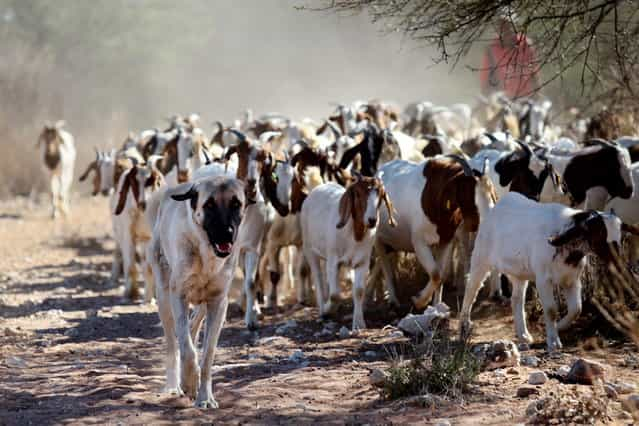

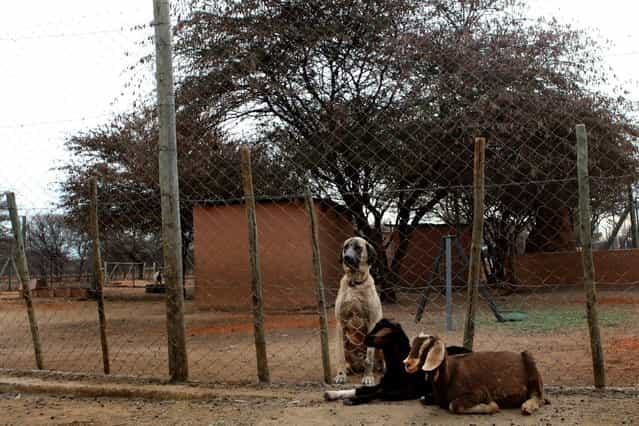
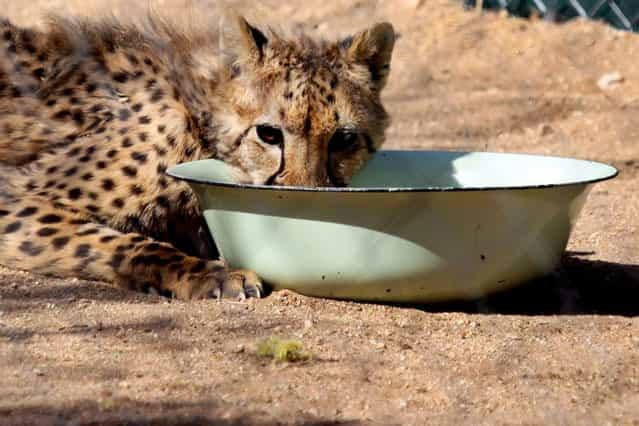
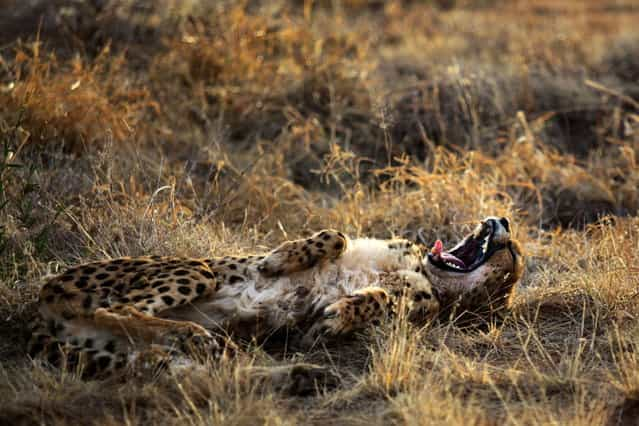
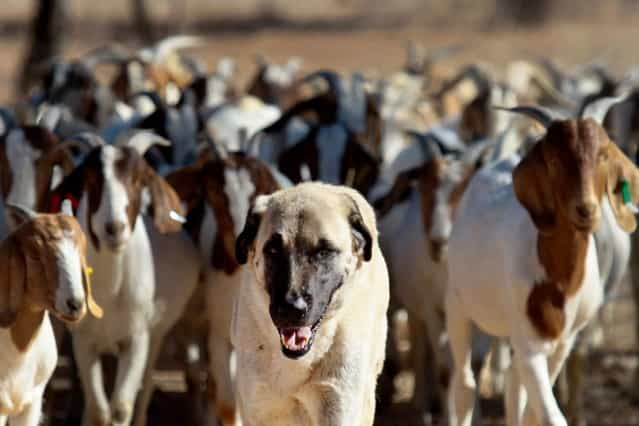
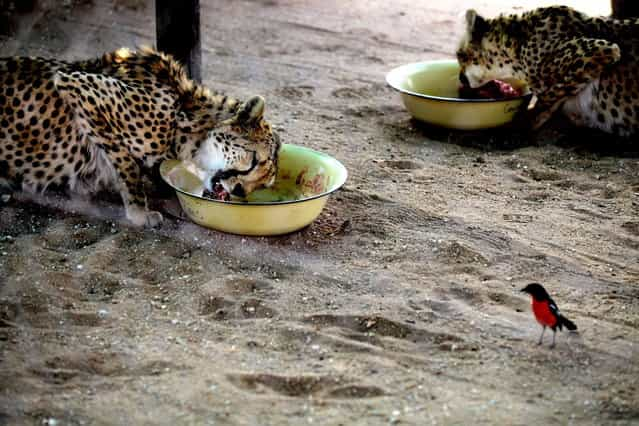

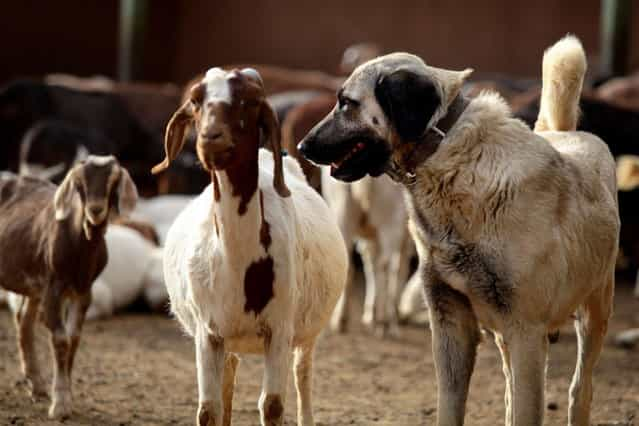
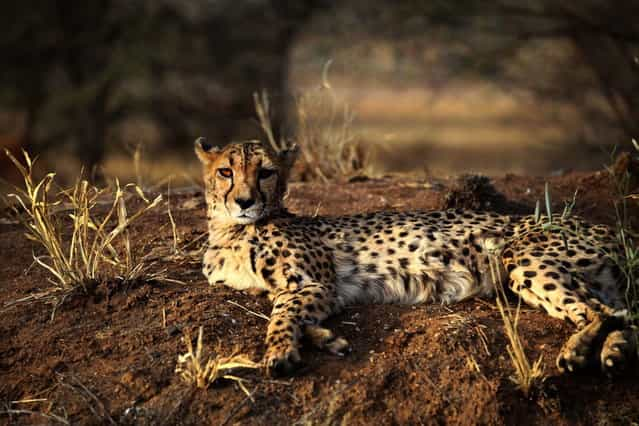
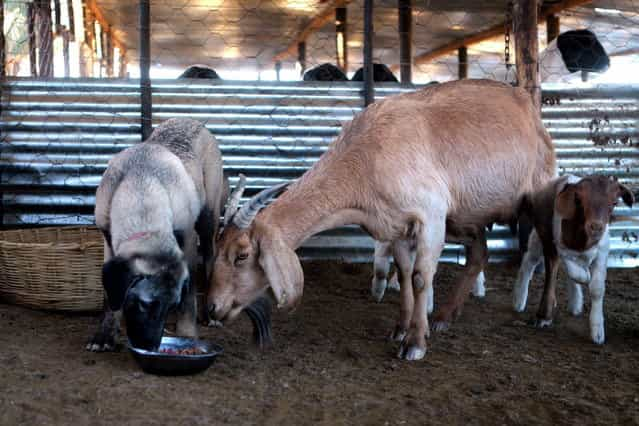

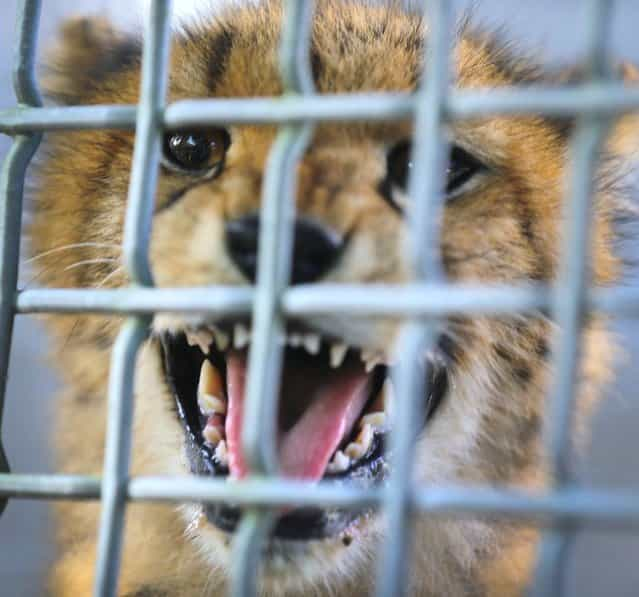
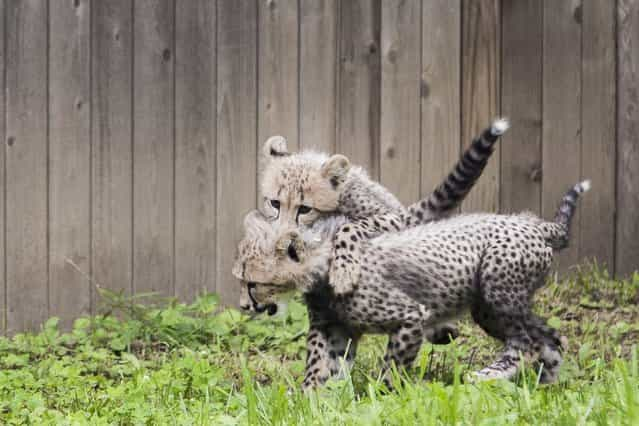

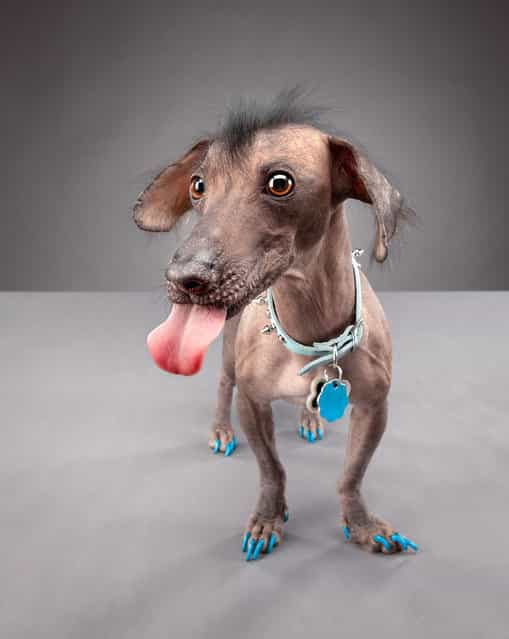

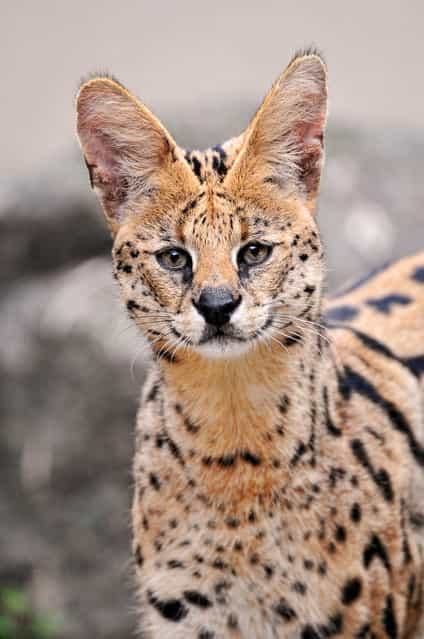

![Rare [Hybrid] Total Solar Eclipse Rare [Hybrid] Total Solar Eclipse](http://img.gagdaily.com/uploads/posts/fact/2013/short/00010c55_medium.jpg)






